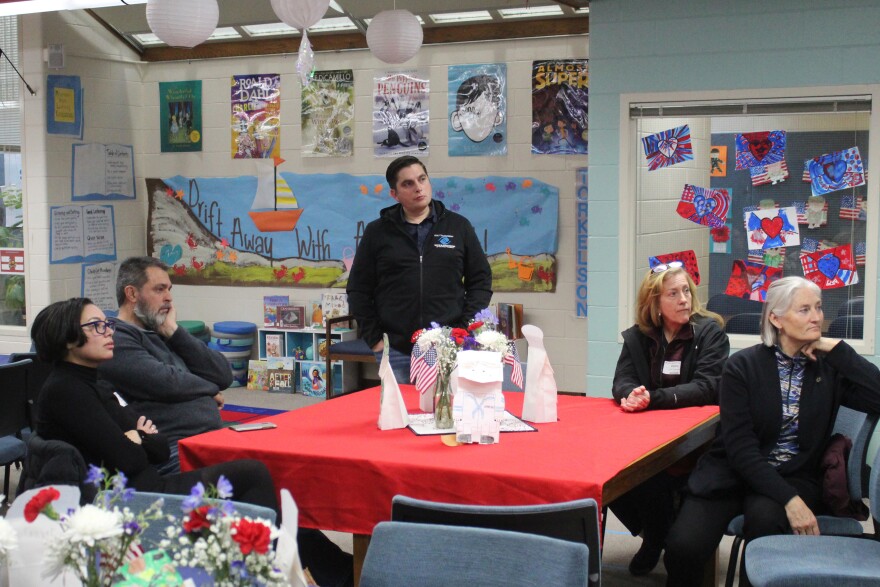A group of state lawmakers tasked with studying how Alaska pays for public education convened on the Kenai Peninsula to visit schools and speak with staff. Legislators will incorporate on-the-ground input into broader recommendations about education funding.
A group of five lawmakers walk the halls of Mountain View Elementary School in Kenai, talking with administrators and towering over the school’s kindergarten through fifth graders. At roughly 400 students, the school is the Kenai Peninsula Borough School District’s largest elementary program.

And for members of the Alaska Legislature’s education funding task force, it was just one stop on a day-long visit to the central peninsula that brought them to a small sample of the district’s 42 schools.
Anchorage Democratic Sen. Löki Tobin co-chairs the task force with Sitka independent Rep. Rebecca Himschoot.
“We identified different school sites that we wanted to visit and to hear more from the educators in those communities and to understand the perspectives of the community and also of the students who were attending those school institutions,” Tobin said.
State lawmakers created the task force earlier this year to study Alaska schools, including absenteeism, open enrollment and school accountability. The group was included in a school funding bill to garner bipartisan support for the legislation. The bill passed, and lawmakers overrode a subsequent gubernatorial veto.
While at Mountain View Elementary, task force members participated in a Veterans Day assembly, watched reading lessons and sat in on classes.
Soldotna Republican Rep. Justin Ruffridge is a member of the task force. He says bringing lawmakers into schools is just as valuable, if not more, than committee meetings, especially when it comes to connecting with employees and students.
“Unless you step into their space and see where they're at, you're going to miss a whole bunch of stuff. So a site visit, to me, is maybe one of the key elements of being able to have a task force, is to get into places where people are doing this work every day,” he said. “Because if you don't, you miss things.”

Himschoot says she’s looking forward to visiting more rural schools, like those in her legislative district. She says small schools often bear the brunt of economies of scale. That’s something Kenai Peninsula school board members have focused on, too.
“I don't want urban schools to have any less than they have, but I want rural schools to have something comparable,” she said. “And I feel right now, we have an unequal playing field in our schools.”
Tobin says task force members are being encouraged to take their time gathering information. That means they’re not planning to make recommendations for the upcoming session. But Fairbanks Republican Rep. Mike Cronk says indicators suggest it’s going to be another tough year figuring out what to pay for. He’s a former teacher.
“You know, I'm pretty brutally honest,” he said. “I mean, you look at the price of oil right now, there's not going to be a whole lot of leeway of any kind of funding for any department, I mean, and that's just the reality of where we're at right now.”
Facing a $17 million budget shortfall last year, Kenai Peninsula school board members implemented broad and deep cuts, closed a school and laid off employees.
Lawmakers stressed the importance of public input – both in general and regarding the work of the task force specifically. The group is required to submit a report of its findings and make recommendations in 2027.





